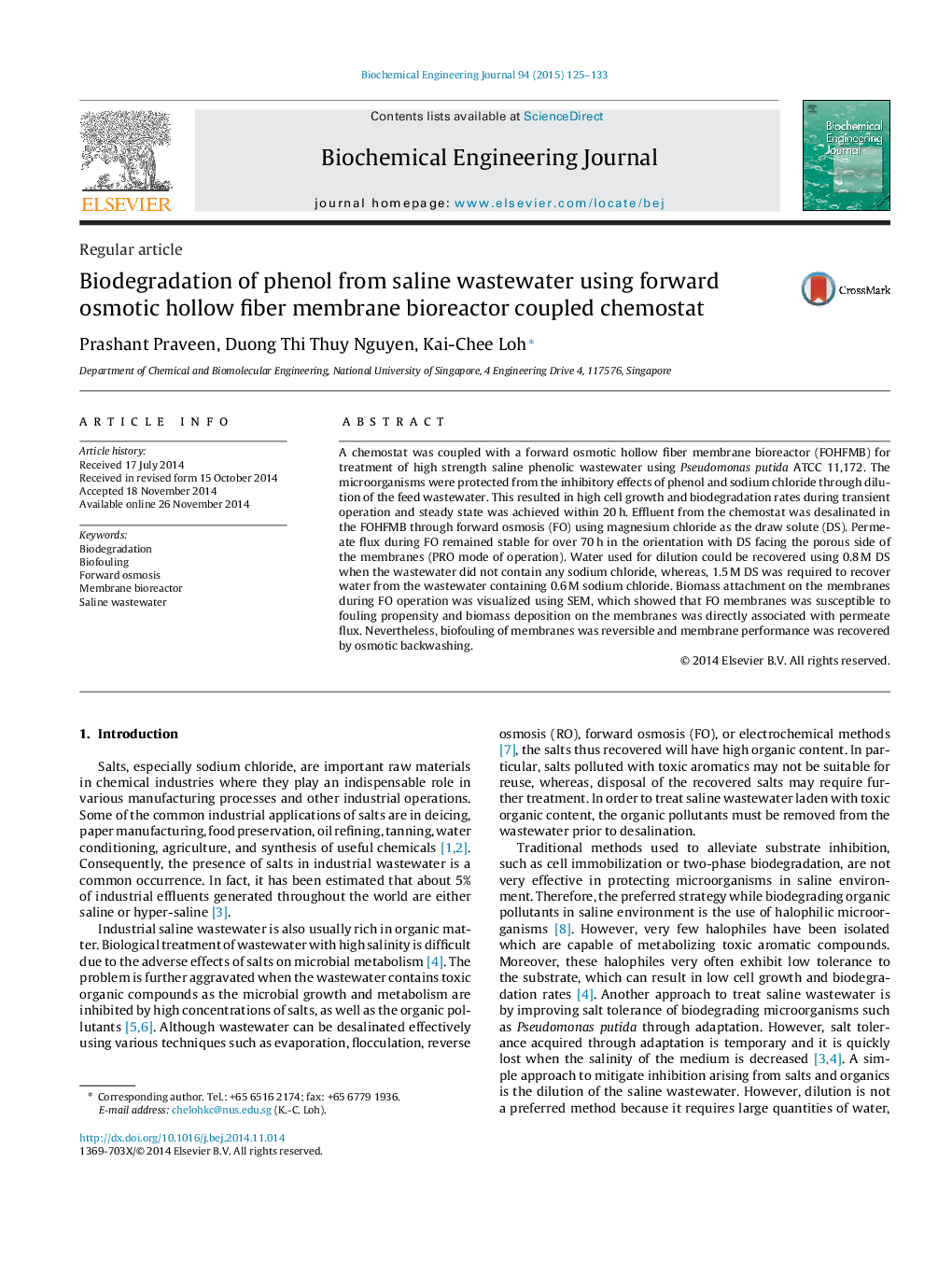| Article ID | Journal | Published Year | Pages | File Type |
|---|---|---|---|---|
| 3046 | Biochemical Engineering Journal | 2015 | 9 Pages |
•A chemostat was coupled with forward osmotic hollow fiber membrane bioreactor.•The integrated bioreactor was used for treatment of saline phenolic wastewater.•Effects of operating parameters on bioreactor performance were examined.•Forward osmosis performance decreased sharply due to biofouling.•The severity of biofouling increased at higher permeate flux.
A chemostat was coupled with a forward osmotic hollow fiber membrane bioreactor (FOHFMB) for treatment of high strength saline phenolic wastewater using Pseudomonas putida ATCC 11,172. The microorganisms were protected from the inhibitory effects of phenol and sodium chloride through dilution of the feed wastewater. This resulted in high cell growth and biodegradation rates during transient operation and steady state was achieved within 20 h. Effluent from the chemostat was desalinated in the FOHFMB through forward osmosis (FO) using magnesium chloride as the draw solute (DS). Permeate flux during FO remained stable for over 70 h in the orientation with DS facing the porous side of the membranes (PRO mode of operation). Water used for dilution could be recovered using 0.8 M DS when the wastewater did not contain any sodium chloride, whereas, 1.5 M DS was required to recover water from the wastewater containing 0.6 M sodium chloride. Biomass attachment on the membranes during FO operation was visualized using SEM, which showed that FO membranes was susceptible to fouling propensity and biomass deposition on the membranes was directly associated with permeate flux. Nevertheless, biofouling of membranes was reversible and membrane performance was recovered by osmotic backwashing.
